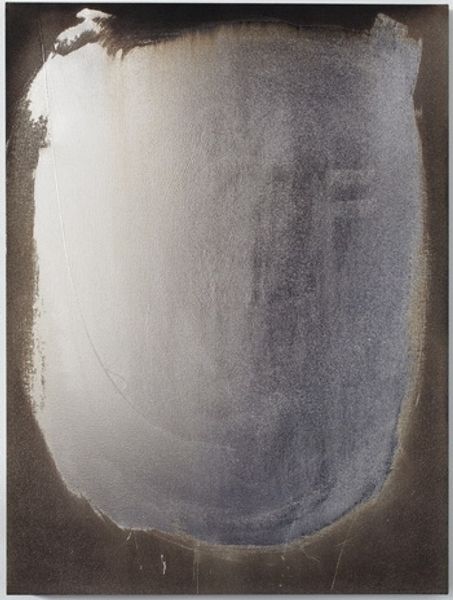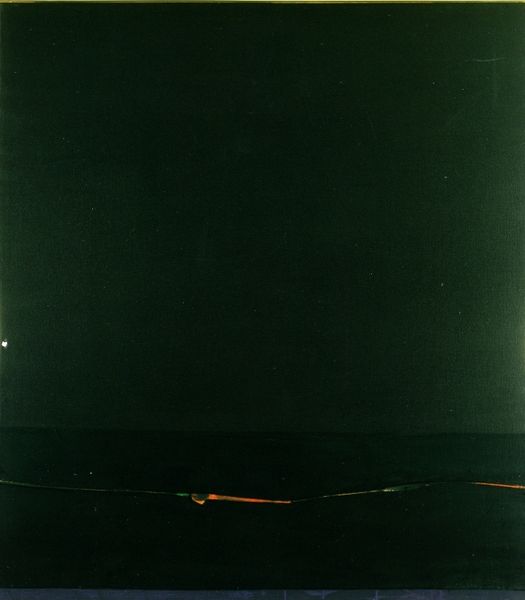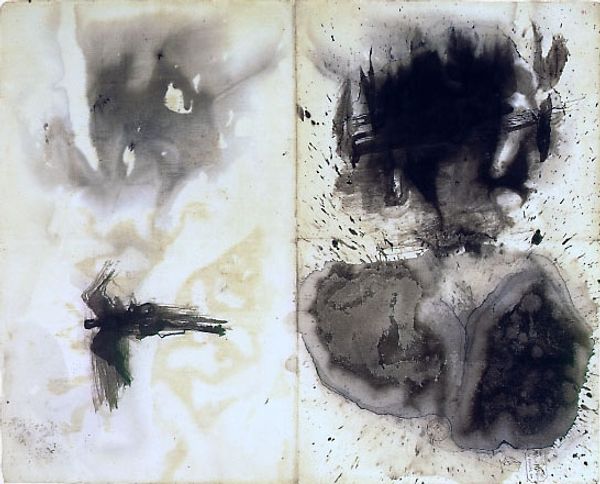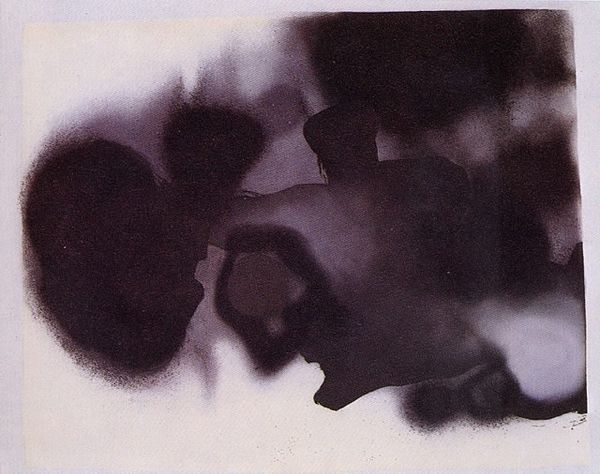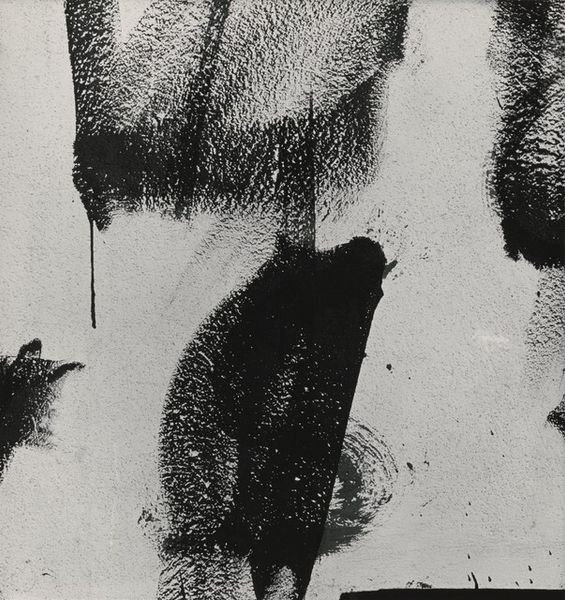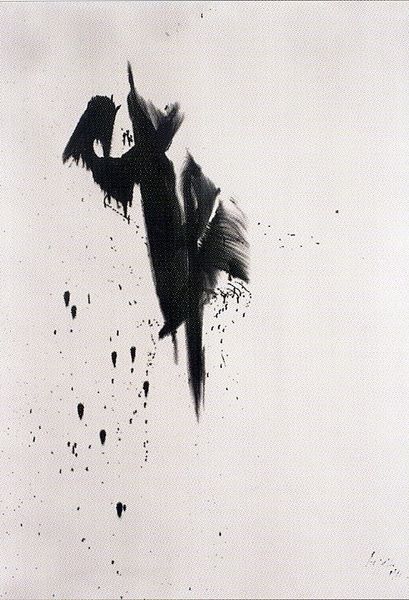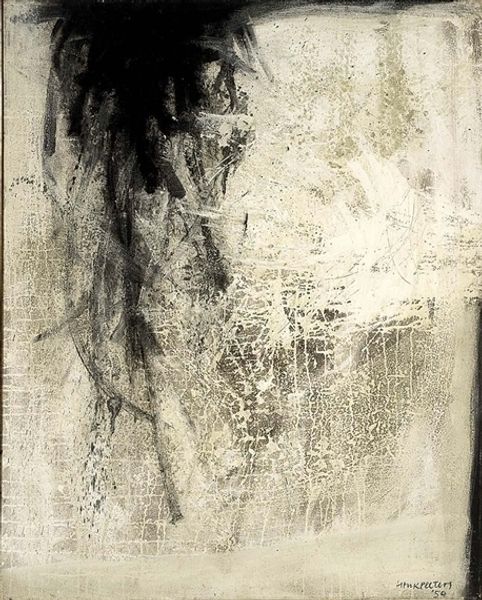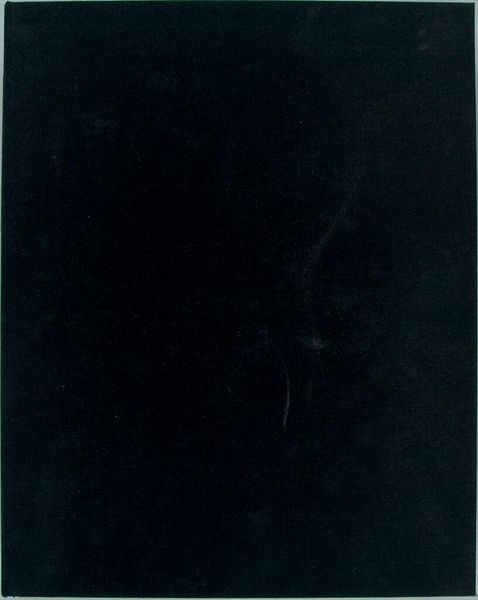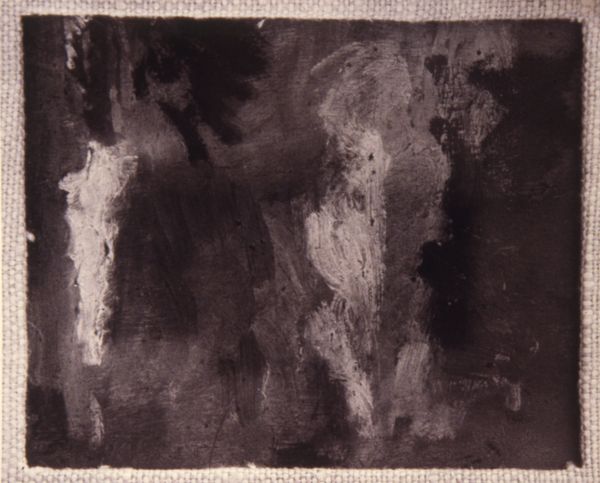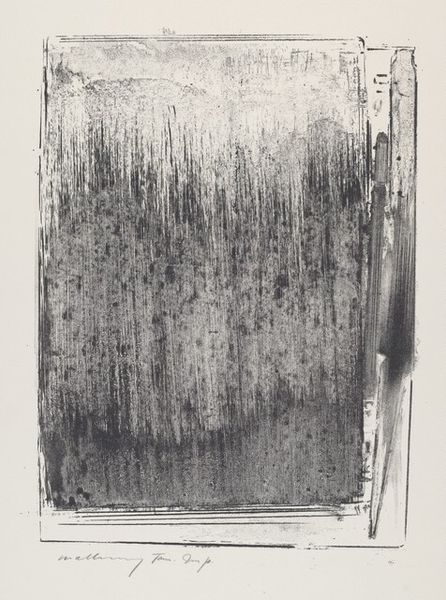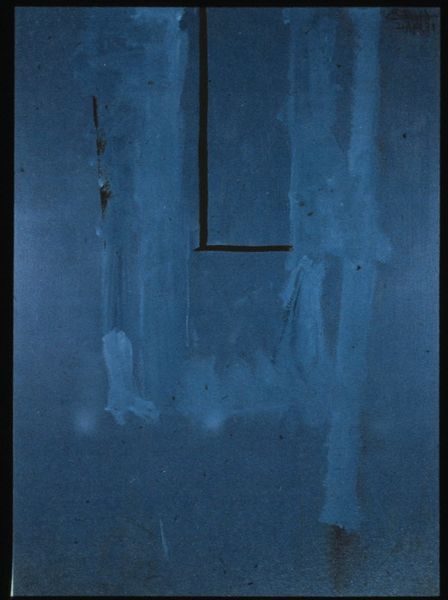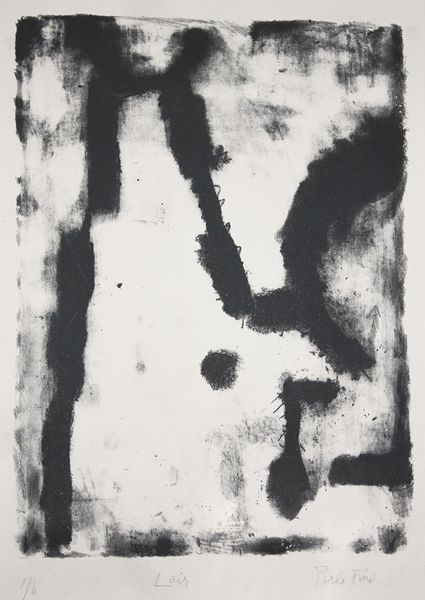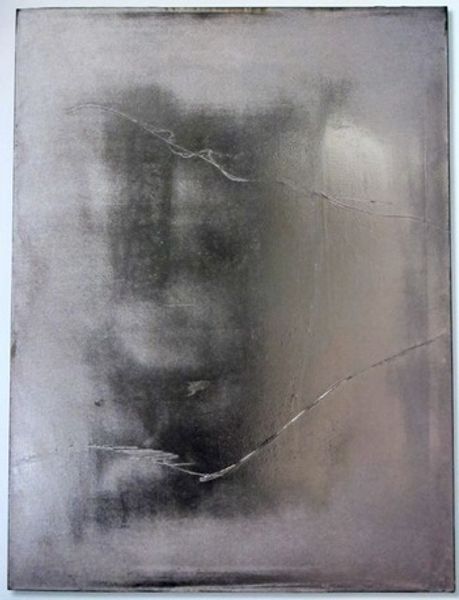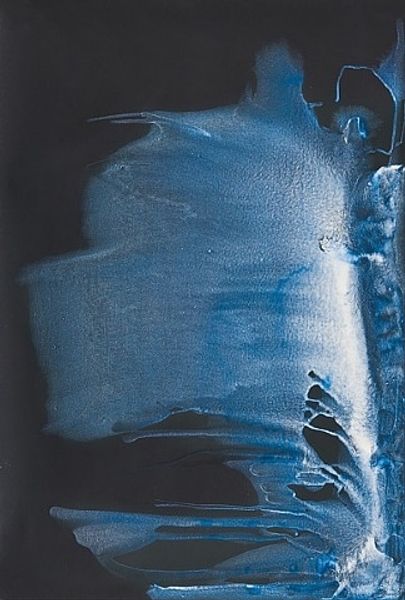
Copyright: Hans Hartung,Fair Use
Editor: This is "Untitled (T1989-U11)" created by Hans Hartung in 1989, using acrylic and stain. The colors are really muted, almost monochrome, and the marks feel so spontaneous. It almost looks like something accidental captured perfectly. How do you interpret this work? Curator: Well, focusing on the materiality, it’s crucial to consider Hartung’s physical process. These acrylic and stain marks weren’t made by passive observation; they demanded engagement. I see gestural actions, possibly tools he crafted or repurposed, leaving trails of pigment. Was this about personal expression, or perhaps a deconstruction of traditional artistic labor? Editor: A deconstruction of labor? How so? Curator: Consider the historical context. In 1989, discussions around artistic production, commodification, and value were intensifying. This ‘Untitled’ piece rejects the smooth, impersonal surfaces often associated with mass-produced objects. Instead, it highlights the handmade, the imperfect, the indexical trace of the artist’s hand. What's left behind? Splatters and chaotic linear strokes. Do these materials highlight Hartung’s mastery or hint to what the definition of art becomes as time progresses? Editor: So you're saying the ‘messiness’ itself becomes a statement about what art-making is, pushing back against industrialized perfection? That makes me think about how we even value skill differently now. Curator: Precisely! Think of the canvas itself, the support for these actions. Was it primed, prepared traditionally? Or did Hartung deliberately choose a surface that would interact uniquely with the stain and acrylic, further emphasizing process over a predetermined image? Considering the physical realities – the specific brands of paint, the types of brushes or tools used, these material details, give us so much depth in understanding Hartung. Editor: That's a very cool way of looking at abstract art. I’ve learned to focus more on how it was made, not just what it might represent. Curator: Exactly! Paying attention to the means of production and considering the socio-economic landscape reshapes our appreciation and understanding.
Comments
No comments
Be the first to comment and join the conversation on the ultimate creative platform.
